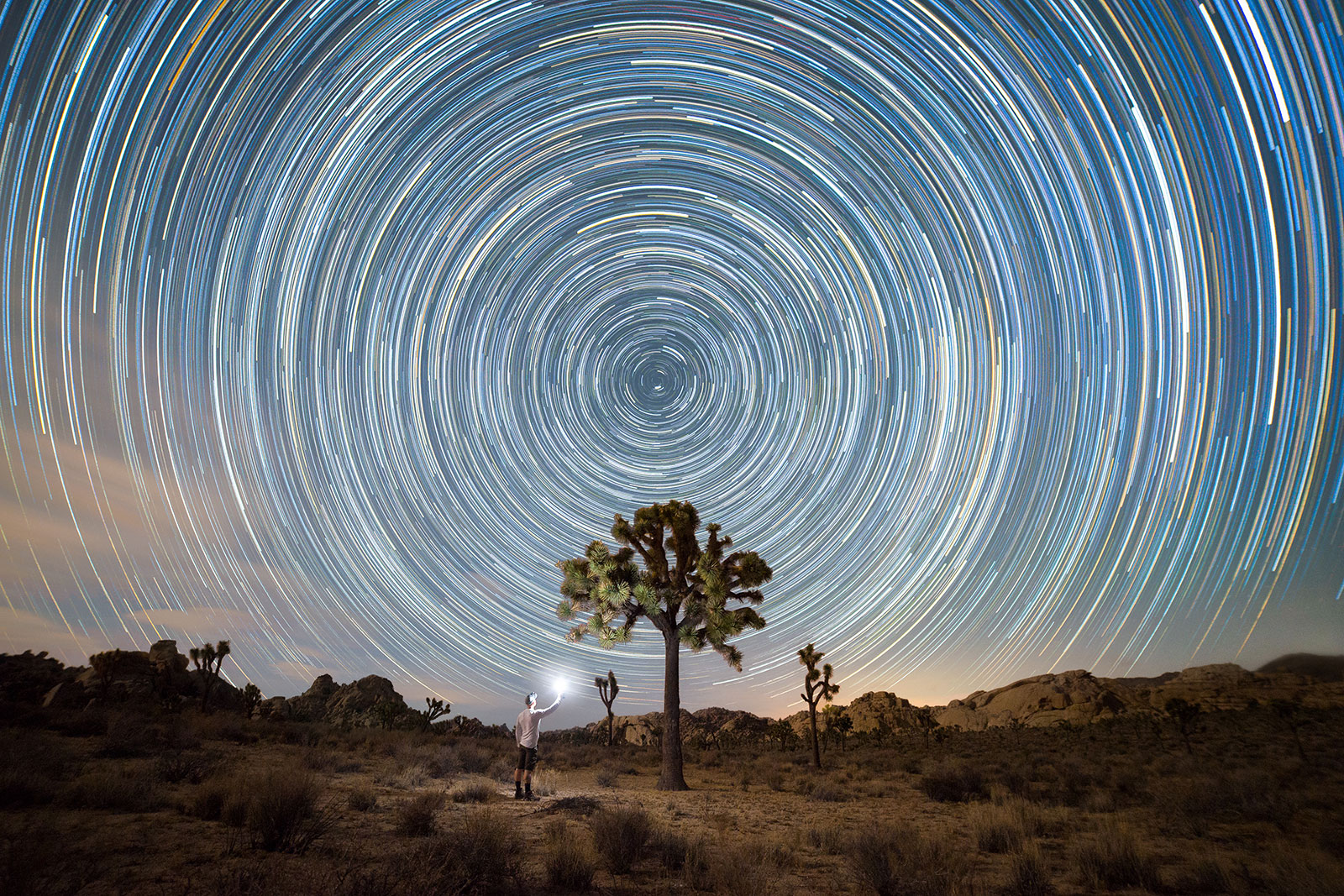
Think about all the things that we can see in the sky. Some of them, like clouds or airplanes, are right here with us on Earth. Others, like the Sun, Moon, planets, and stars, are much farther away, meaning that they are in space (sometimes called “outer space”). We use the word celestial to describe things that are in space, so we can say that the Sun, Moon, planets, and stars are “celestial bodies.” In this section, we’ll explore how and why we see celestial bodies moving through our sky each day.
Section Learning Goals
By the end of this section, you should be able to answer the following questions:
- What do we see in the local sky?
- What is the celestial sphere?
- Why do stars rise and set?
- Why do we see different constellations at different times of year?
Before you continue, take a few minutes to discuss the above Learning Goal questions in small groups or as a class. For example, you might discuss what (if anything) you already know about the answers to these questions; what you think you’ll need to learn in order to be able to answer the questions; and whether there are any aspects of the questions, or other related questions, that you are particularly interested in.
Some important general notes before you begin teaching Section 2.1:
- As you will see, many of the diagrams and concepts in this section require 3-dimensional visualization, which some people (both kids and adults) have difficulty doing. We’ve included suggestions to help along the way, but be aware that even though the material is conceptually fairly simple, visualization can be difficult for some students, even if they have very strong skills in math and science generally.
- For those who have difficulty with the visualization, it is OK to just memorize some of the facts that come along the way. These facts are still important because, as we’ll discuss further in Chapter 3, they help students understand how and why our ancestors gradually figured out that Earth is round and is a planet that orbits the Sun.
- We introduce the idea of scientific models in this section, though students have hopefully also encountered this idea in earlier grades. Note that in this first section, neither of the models we introduce (the sky dome and the celestial sphere) accurately reflects reality, even though they are useful for some purposes (mapping the local sky with the sky dome and understanding how objects move through the sky with the celestial sphere). Be sure that students recognize that not all models are similarly flawed. For example, later in the course we will cover models that scientists think reflect reality quite well, such as models of how the solar system formed or models of Earth’s climate. In fact, the general description of the universe we covered in Chapter 1 (in which Earth is a planet going around a star in one galaxy among many) is also a “model,” though one in which we are so confident in that we now consider it a true representation of reality.
Connections—Etymology
Caelum
The word celestial means “heavenly,” and is derived from the Latin root caelum, which means “heaven.” The idea of referring to objects in space (such as the Sun, Moon, planets, and stars) as celestial goes back to ancient times when people considered everything in the sky to be part of “the heavens.”
Group Activity
What do we see in the sky?
- Make a list of different types of objects that appear in the sky.
- For each object type on your list, categorize it either as (a) belonging to Earth (or in Earth’s atmosphere) or (b) celestial.
- For each type of celestial object, discuss what type of daily motion we see for it, and also discuss whether it has other motions besides those we see daily (such as motions over weeks, months, or years).
Teacher Notes: We suggest doing this Group Activity with groups of at least 4 to 5 students; it can also be done with the entire class working together as you lead.
- For (1): Write down the objects as students list them.
- For (2): Now go down the list from (1) and in each case, ask students to decide whether it is part of Earth or celestial. If there is disagreement, have them discuss until they reach a consensus.
- Examples of objects that are of Earth: clouds, airplanes, helicopters, smoke trails
- Examples of celestial objects: Sun, Moon, planets, stars, asteroids, comets, galaxies.
- Note: There may be some ambiguous cases that you might put in an “in-between” category. For example:
- meteors are in Earth’s atmosphere when they burn up, but their precursor particles were in space and hence celestial
- artificial satellites that orbit Earth are “in space,” but because they orbit Earth at high speeds, they do not move through our sky like other celestial bodies.
- For (3): Here you should try to help students understand that, for example:
- All celestial objects have a daily motion through the sky, generally rising in the east and setting in the west (unless they are circumpolar); as students will learn in this section, this daily motion is a simple consequence of Earth’s daily rotation.
- While stars follow the same path through the sky each day, some objects have paths that vary from day to day. These include the Sun (annual changes in path that are tied to seasons, discussed in Section 2.2), Moon (changing path that leads to phases, discussed in Section 2.3), and planets (more complex paths, discussed in Section 2.4).